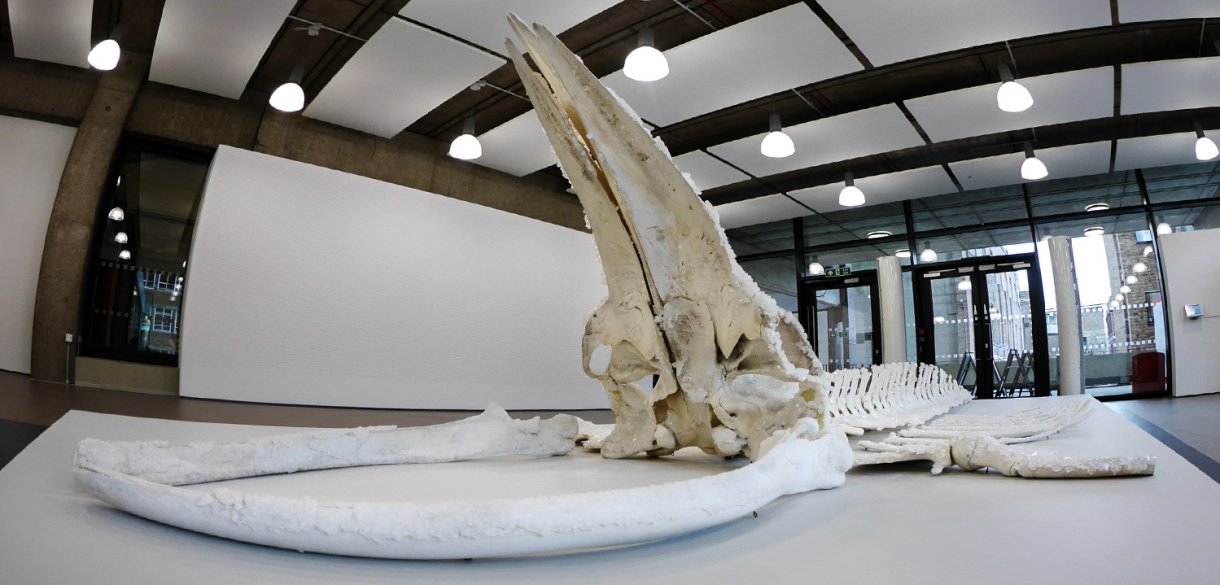Stranded
2006
Working closely with the Cetacean Stranding Programme at the Natural History Museum, London, in October 2005 Ackroyd & Harvey were alerted to a beached whale washed up at Gibraltar Point, Skegness. Back at their studio, the bones were cleaned and immersed in a highly saturated alum solution, encrusting the 6m long skeleton with a chemical growth of ice-like crystals.
As work progressed so did the artists understanding of how the oceans absorb vast quantities of carbon dioxide entering the atmosphere through the burning of fossil fuel. In the past 200 years alone, ocean water has become 30 percent more acidic. The seawater is turning sour and many marine creatures are struggling to make shells. The acidification of the oceans is affecting corals, molluscs and tiny zooplankton – the major food source of many marine animals, including whales. It is now scientifically accepted that should consumption of fossil fuels continue unabated, the acidity of the oceans will increase incrementally and the life they support will perish.
Reflecting on the consequence of critical change, the skeleton encased in crystal presents a memento mori for our times.
From 2003 – 2007 the artists made a series of voyages to the High Arctic with Cape Farewell to study the effects of climate change on the environment. The work is displayed with a 17min. film that documents the artists’ process of flensing the whale and preparing the bones.
The Making of Stranded
Director: Duncan Harris
Film 17min.
